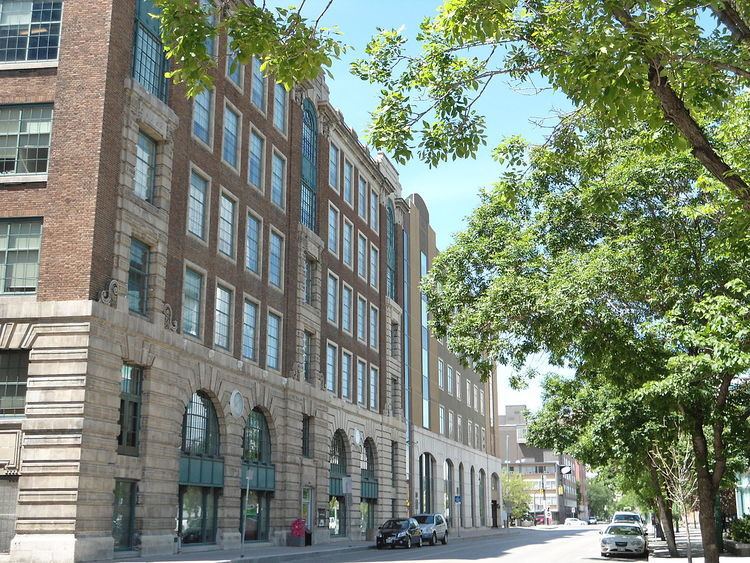Type Daily newspaper Founder(s) William Fisher Luxton Editor Paul Samyn | Format Broadsheet Publisher Bob Cox | |
 | ||
Owner(s) FP Canadian Newspapers Limited Partnership | ||
The Winnipeg Free Press is a daily (excluding Sunday) broadsheet newspaper in Winnipeg, Manitoba. It provides coverage of local, provincial, national, international, sports, business, and entertainment news. Various consumer-oriented features such as homes and automobiles appear on a weekly basis. The newspaper's main competition is the Winnipeg Sun, a print daily tabloid.
Founded in 1872, as the Manitoba Free Press, it is the oldest newspaper in western Canada. It has the largest readership of any newspaper in the province and is regarded as the newspaper of record for Winnipeg and Manitoba. The newspaper's existence began only two years after Manitoba's joining of Confederation in 1870, and predated Winnipeg's incorporation in 1873.
History
The Manitoba Free Press was launched November 30, 1872, by William Fisher Luxton and John A. Kenny. Luxton bought a press in New York and they rented a shack at 555 Main Street, near the present corner of Main Street at James Avenue. In 1874 the Free Press moved to a new building on Main Street, across from St. Mary Avenue. In 1882, control of the Free Press passed to Clifford Sifton, and the paper moved to a building on McDermot Avenue. The organization remained at the McDermot Avenue location until 1900, when it moved to a new address on McDermot, at Albert Street.
From 1901 to 1944, John Wesley Dafoe served as editorial writer, editor-in-chief and president., In 1905 the newspaper moved to a four-storey building at Portage and Garry.
In 1913 the paper moved to 300 Carlton Street, and remained there for 78 years.
In 1920, the Free Press took their newsprint supplier before the Judicial Committee of the Privy Council for violating the World War I War Measures Act. In Fort Frances Pulp and Paper v. Manitoba Free Press, the newspaper won because the court determined that whether the state of national emergency continued after the war was a political matter for Parliament. In 1931 the name of the Manitoba Free Press became the Winnipeg Free Press.
In 1991 the Free Press moved to its current location in the Inkster Industrial Park, a $150–million plant at 1355 Mountain Avenue.
In December, 2001, the newspaper, along with sister paper Brandon Sun, was bought from Thomson Newspapers by FP Canadian Newspapers Limited Partnership.
As of November 1, 2009, the paper ceased publishing a regular Sunday edition. In its place, a Sunday-only tabloid called On 7 was launched, but it is now discontinued. On March 27, 2011, the Sunday newspaper was retooled as a broadsheet format called Winnipeg Free Press SundayXtra, due to the impending arrival of Metro in the Winnipeg market. The Sunday edition is available for purchase only from vending boxes and retailers.
According to Canadian Newspaper Association figures, the newspaper's average weekday circulation for 2013 was 108,583, while on Saturdays it was 144,278. Because of the relatively small population of Manitoba, this means that over ten percent of the population will look at the paper and the ads. The Winnipeg Free Press remains profitable and viable. The newspaper is a print news source in a largely isolated area, with a high percentage of viewers.
At noon on Monday, October 13 (Thanksgiving Day) of 2008, about 1,000 members of the Communications, Energy and Paperworkers Union, which represents editorial, advertising, circulation and press staff, as well as newspaper carriers, launched a strike action. The strike ended 16 days later, when the union ratified the final offer on Tuesday, October 28. The contract was ratified by 67 per cent of newspaper carriers, 75 per cent of the pressmen and 91 per cent of the inside workers, including journalists. The recent five-year contract was negotiated, ratified, and signed in 2013, with no threat of a strike. Workers and managers negotiated directly with great success, without the need of a lawyer as previous contracts required.
